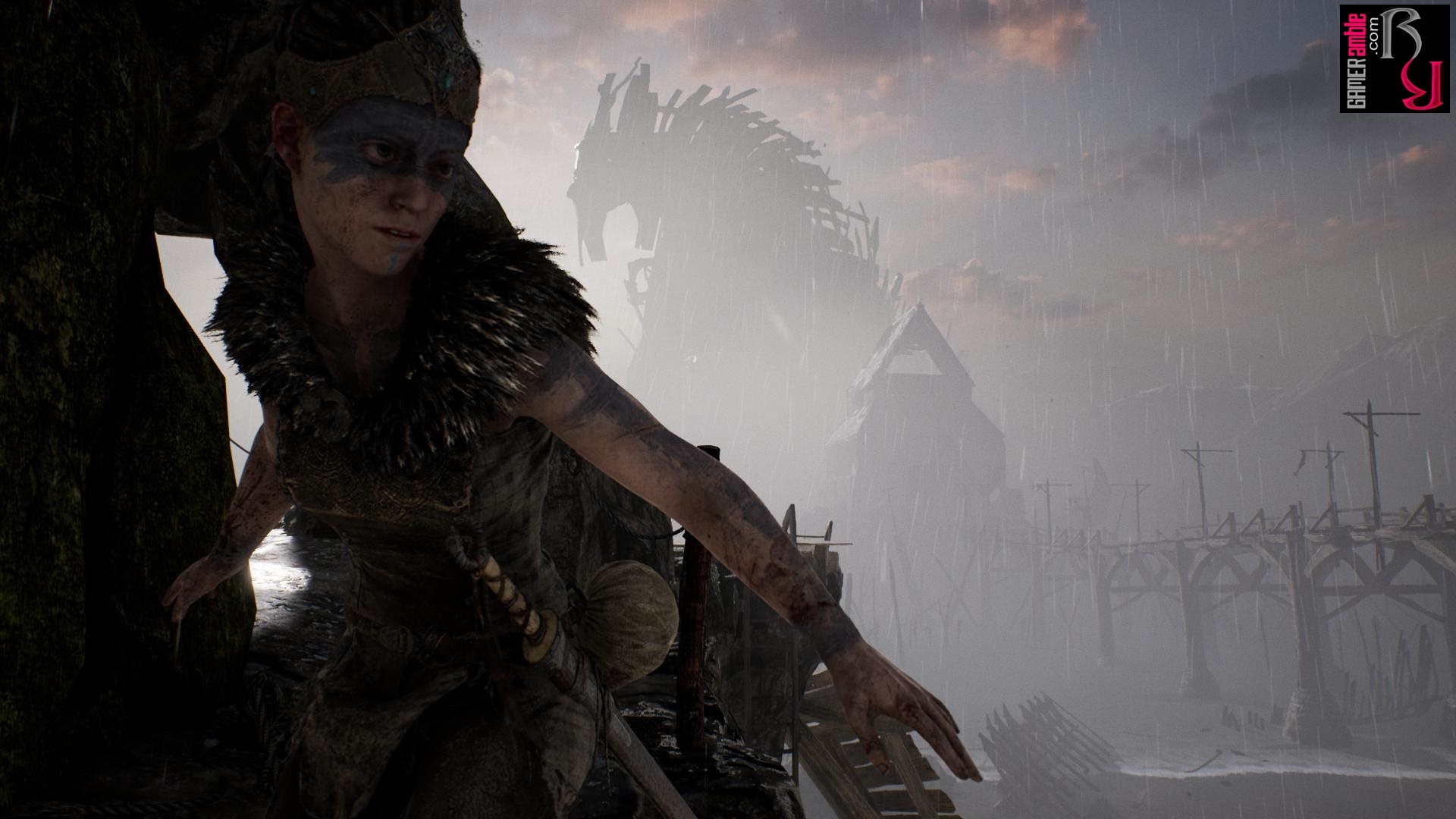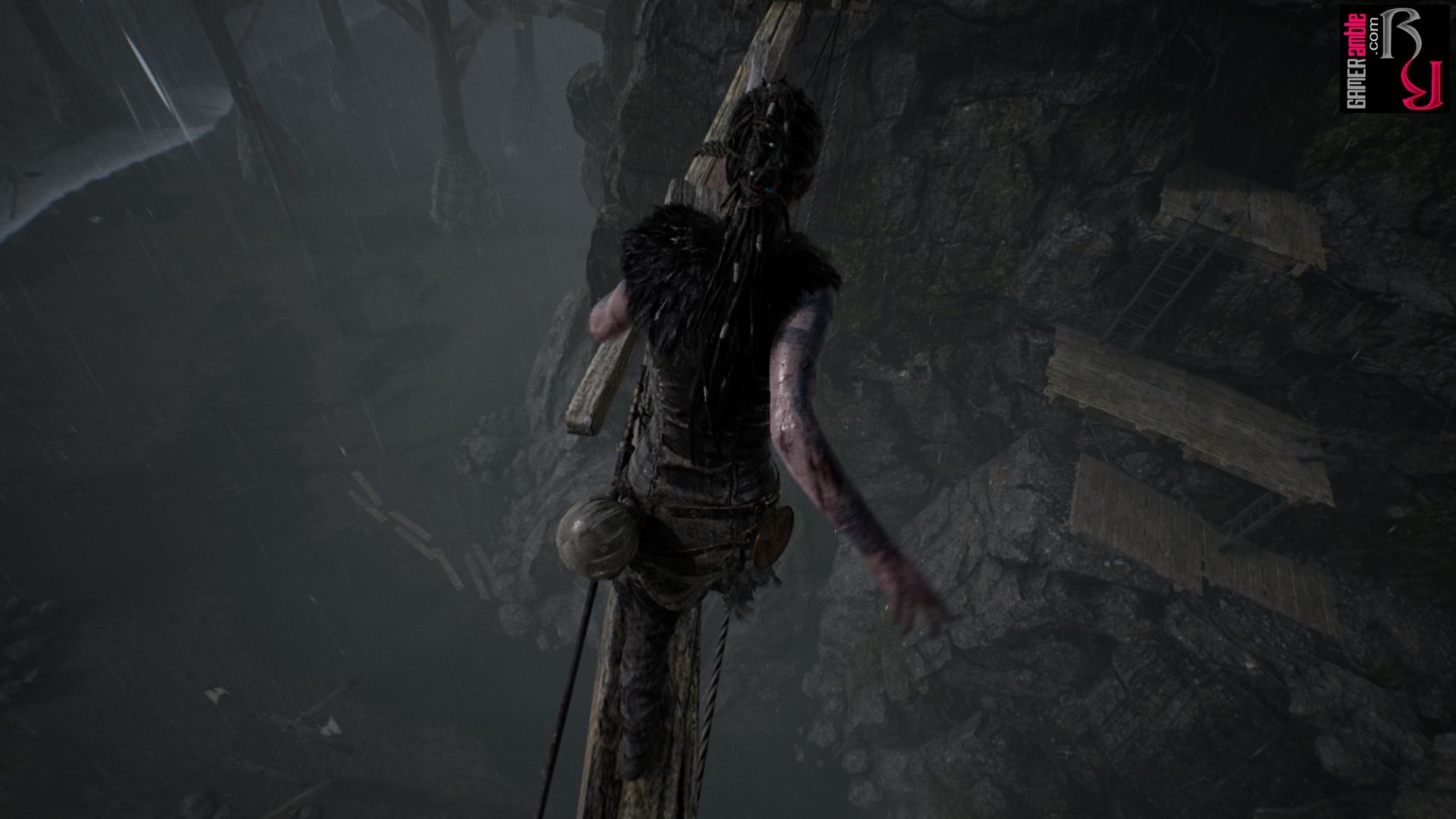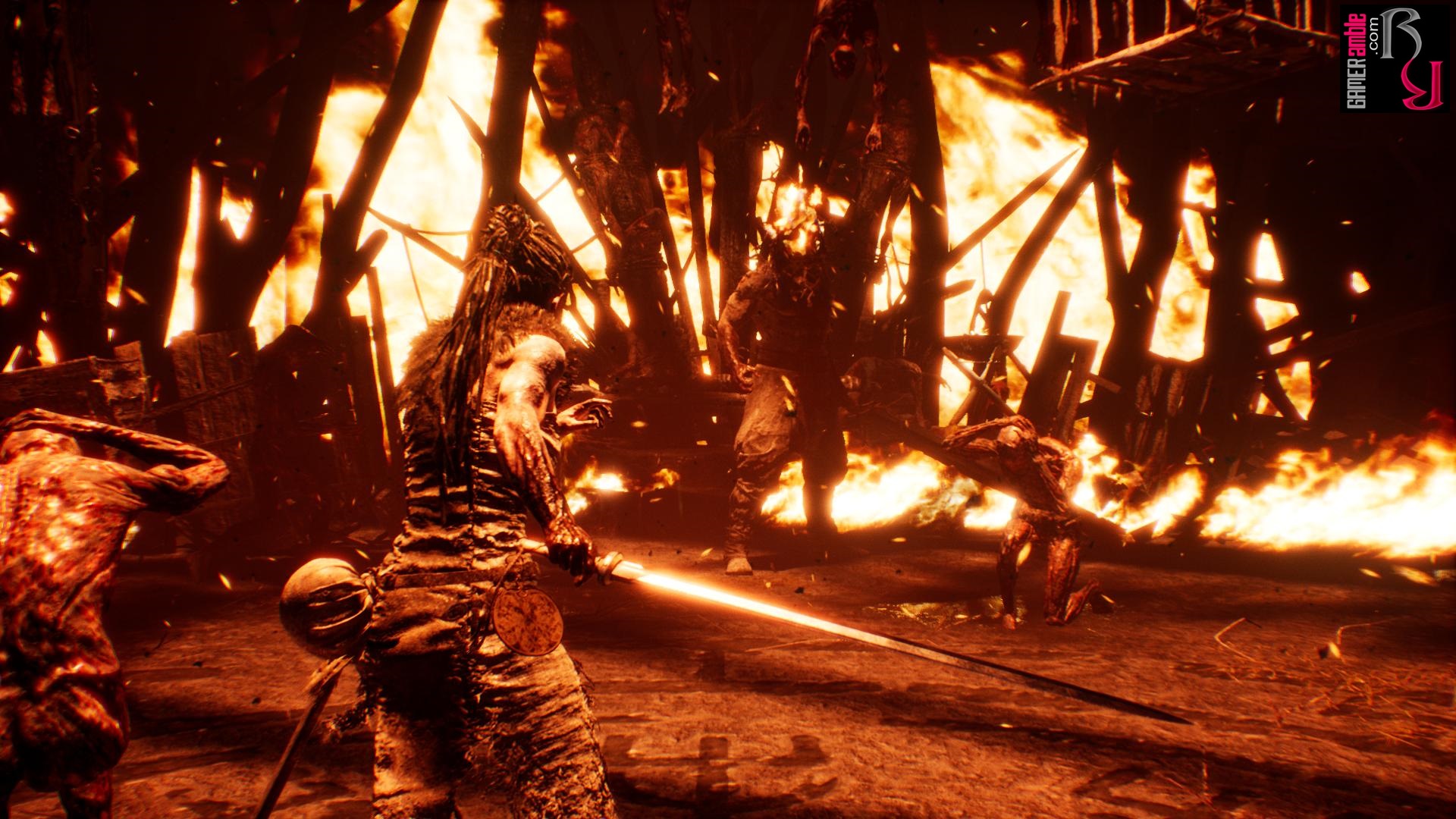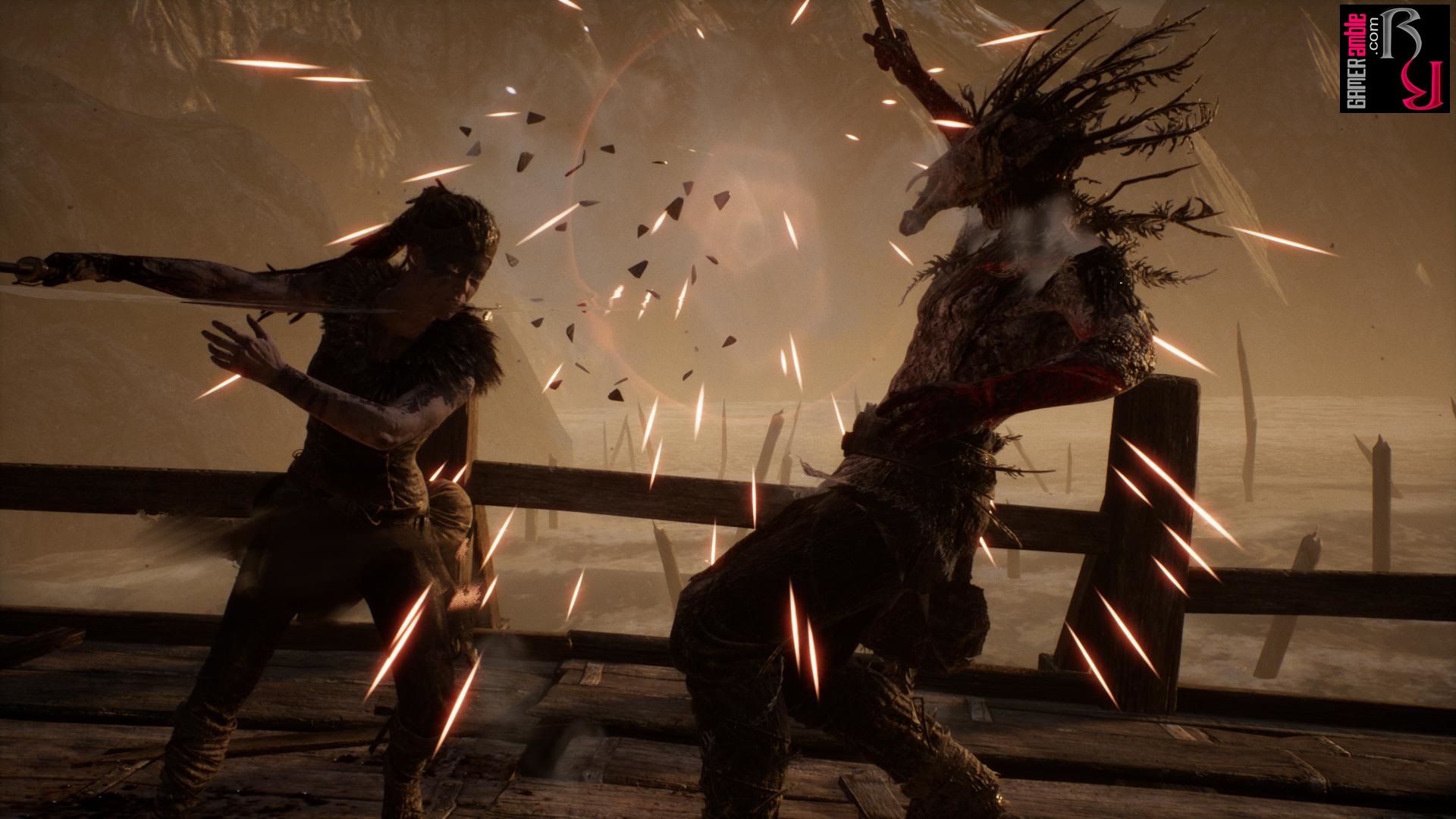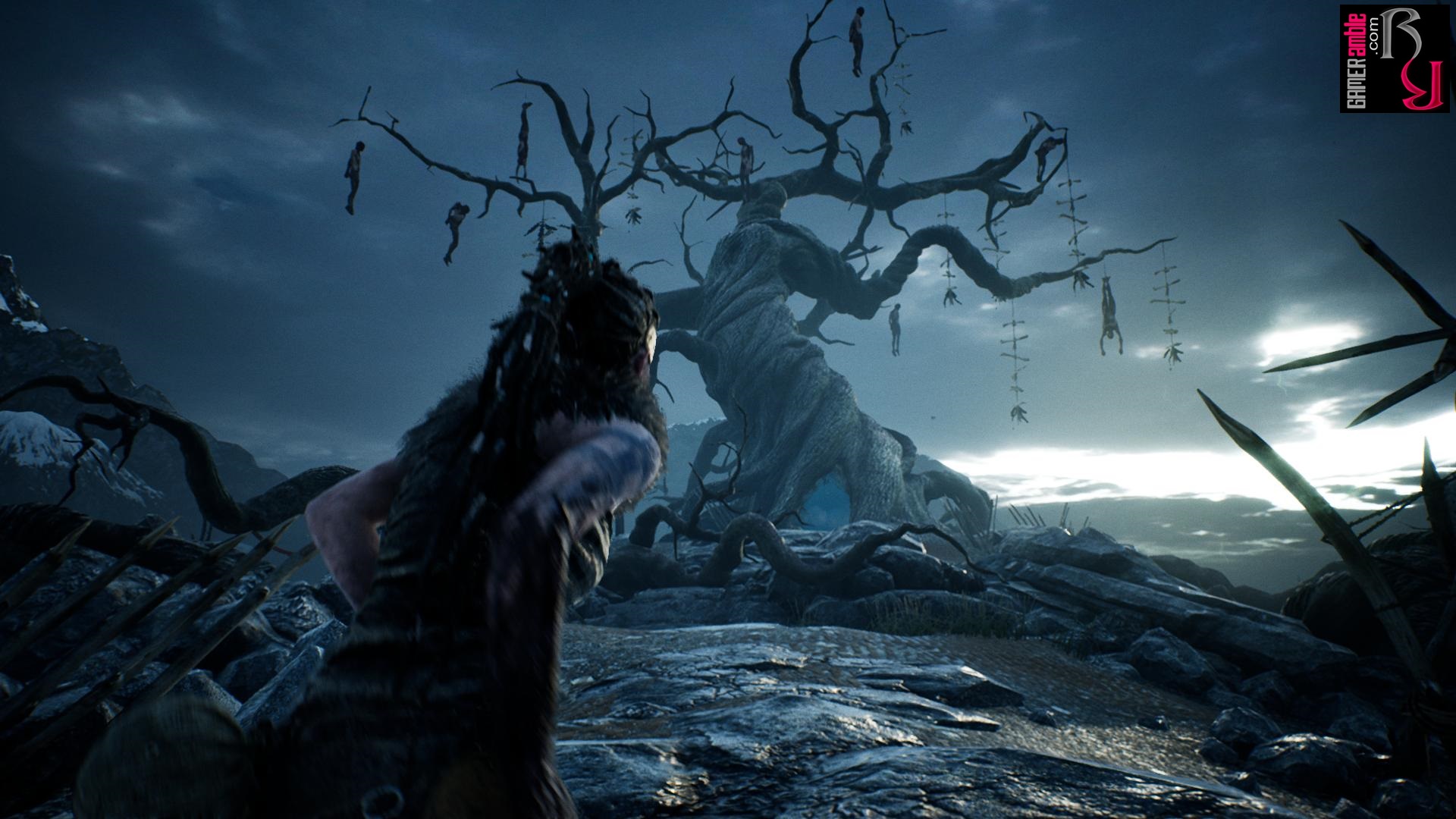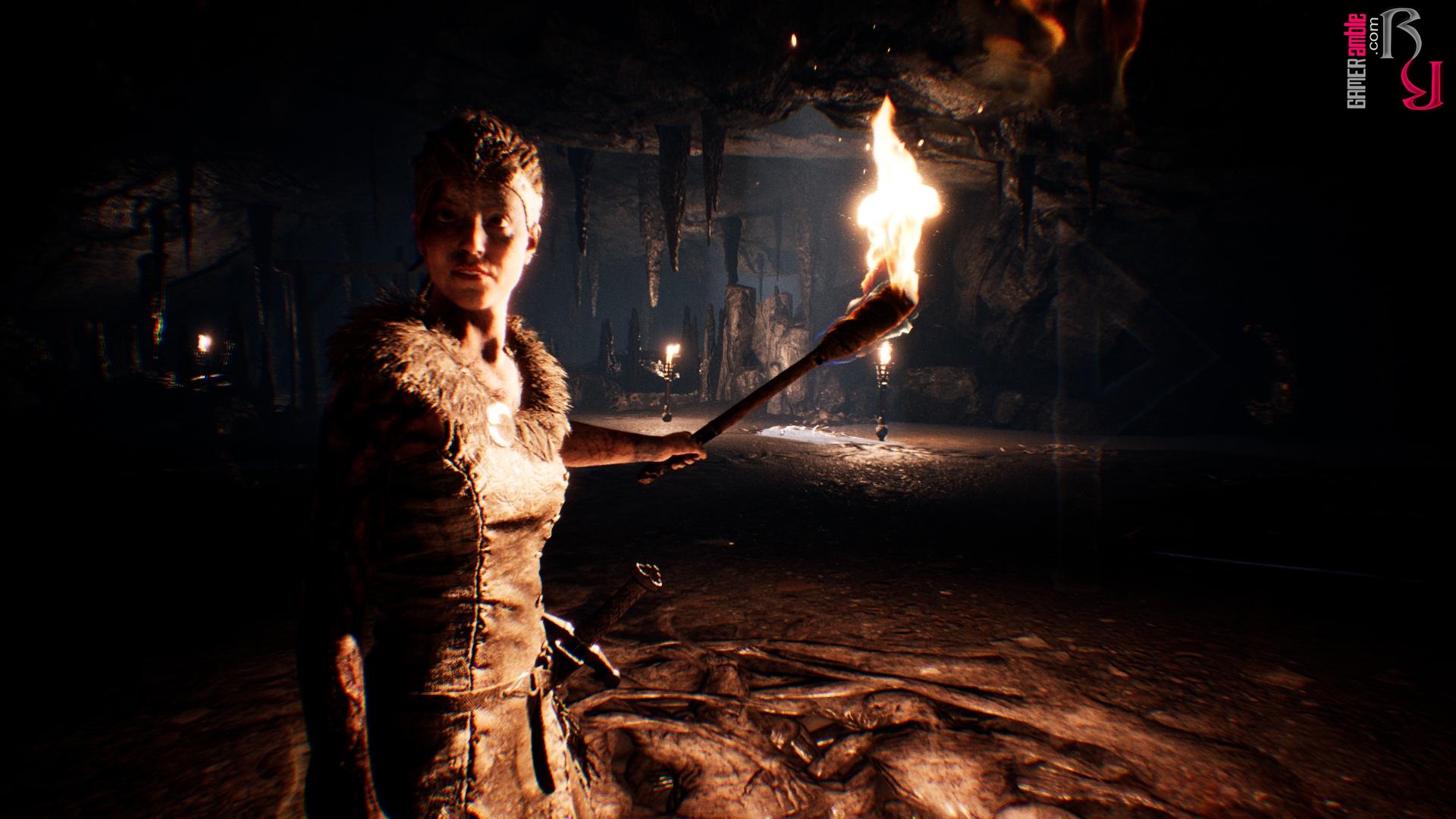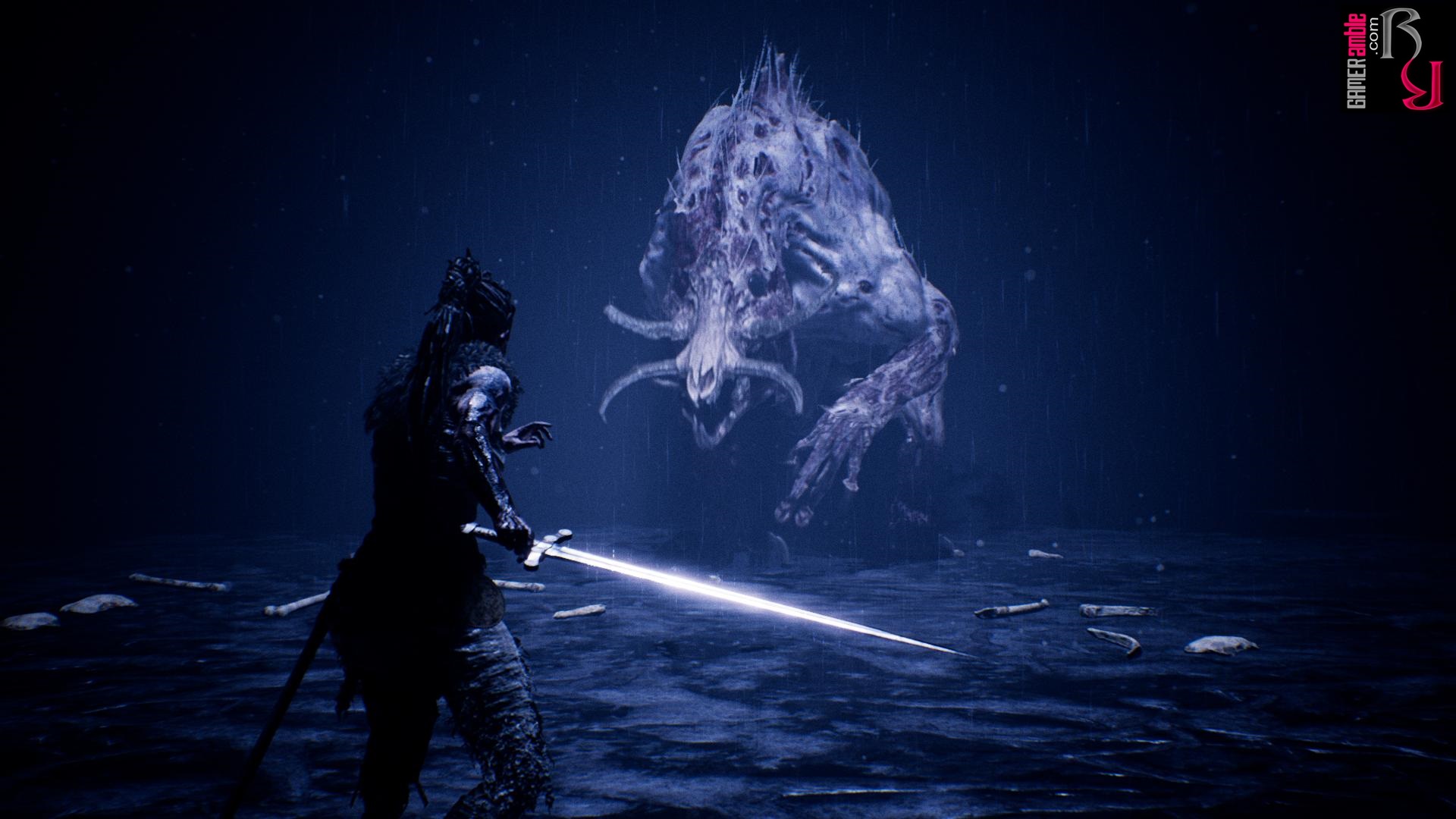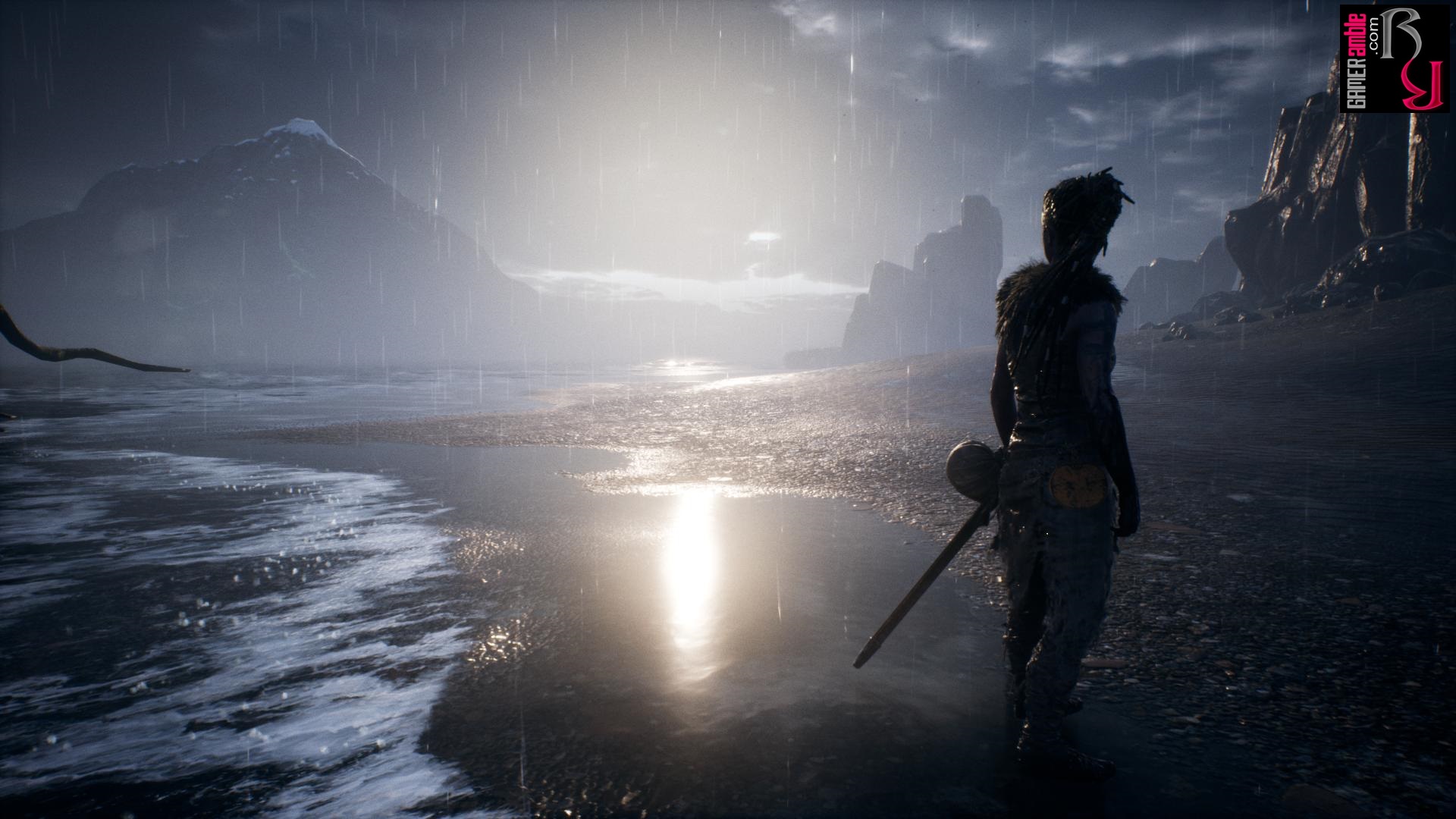Hellblade: Senua’s Sacrifice
Developer: Ninja Theory | Publisher: Ninja Theory | Release Date: 2017 | Genre: Action / Adventure / Indie | Website: Official Website | Purchase: Steam
Thanks to titles such as Heavenly Sword, Enslaved: Odyssey to the West and, of course DMC: Devil May Cry, most players associate Ninja Theory with fast paced games that are action packed. The developers have also built up quite a reputation for themselves when it comes to excellent character animations. However, players expecting more of the same from Hellblade: Senua’s Sacrifice will be in for a surprise. While it still unquestionably a Ninja Theory game, it is also a game where the action frequently takes a back seat to the story. Don’t for a second believe that this makes the experience any less involving, though, as Hellblade is probably one of the most harrowing titles released to date.
Hellblade is set in the Viking age and introduces players to a Celtic warrior named Senua. Not much is revealed about the young Pict warrior at the start of the game, apart from the fact that she appears to be on some type of quest to reach Hellheim and confront the goddess Hella. As Senua ventures further into the land of the dead, it quickly becomes clear that she has lost a loved one and believes that her journey is the only way to bring him back. It also doesn’t take long to realize that Senua suffers from psychosis, although she believes that she is cursed by darkness. This means that Senua isn’t going on some hero’s journey where she gets to flex her superior abilities, but instead must push forward despite being scared, overwhelmed and constantly told by the voices in her head to turn back. Senua’s tragic backstory is slowly revealed over the course of the game via visions and flashbacks and it is no exaggeration to say that she is one of the most memorable protagonists of recent years.
Part of the reason why Ninja Theory was able to create such a believable character is that they went the extra mile to collaborate with neuroscientists and consult with people who have experienced psychosis themselves. While Hellblade is very much a fantasy title, it handles psychosis in a much better manner than most of the other games that have attempted to tackle the subject. Instead of glamorizing mental illness or treating it as some sort of super power, the game depicts it as something that players have to deal with even if it isn’t pleasant.
In a lot of narrative focused games the gameplay is always the first to suffer, but Ninja Theory has done a good job with Hellblade in this regard. Your path through the game is still more linear than what we would have liked, but mixed in with the story you will also find plenty of puzzles and combat. The puzzles mostly involve having to locate rune patterns in the environment in order to open doors that block your path. This is based on the fact that people who suffer from psychosis often see patterns where others don’t. In the game, you’ll see rune patterns inscribed on doors and must then look around your environment and line up your perspective in such a manner that the pattern is formed. This can be done with anything from shadows and rocks to trees and buildings, but you might have to make your way to higher or lower vantage points to line everything up correctly. To be honest, these puzzles can become a little repetitive after a while as they are repeated often.
Sometimes Senua will also enter combat arenas where she has to take on waves of enemies with her sword. However, Hellblade features none of the traditional elements, such as a a HUD, earning experience points for defeating enemies or unlocking now combos as you progress. Instead, you have a feat, but weak attack, strong, but powerful attack, melee attack and the ability to dodge. Eventually you’ll be able to activate a focus ability that slows down time and reveals enemies that are trying to cloak themselves in shadows, but that’s it. The combat automatically scales to your skill level, but enemies can quickly decimate you if you are not paying attention to their attacks. Later on they also have the nasty habit of surrounding you, which means you have to rely on the voices in your head to warn you if you are being attacked from behind. The combat feels more brutal and desperate compared to the stylish moves and combos from previous Ninja Theory games, but this fits perfectly with the feel of the game. Just be warned, there is no hand holding or tutorials in this game, so combat can be tricky until you get the hang of it. Overall, the battles feel satisfying, especially the unique boss battles, but some fight scenes can drag on for too long. There is also not a lot of variety when it comes to enemy types, although the ones that are in the game look great.
In addition to the fighting, and puzzle solving, the game occasionally throws some other curve balls at you. In one section you have to navigate your way through some dark caves while evading a monster that can kill you in a few seconds if you step outside the pools of light or if the light from your torch is extinguished. This makes for quite a few tense chase sequences, especially in parts where you are forced to make your way through water which douses your torch. There is also a very tense section where you are left in complete darkness and must use your other “senses” to make your way out unscathed. Finally, the game has some rune stones dotted about the environments, that you can examine to trigger some stories about Viking legends.
Two of the things that really set Hellblade apart is the visuals and audio. We are used to Ninja Theory creating games that look excellent, but Hellblade is their best work yet. This is mostly thanks to the excellent portrayal of Senua, who was given her voice and facial features by Melina Juergens, who is also the video editor for the game. All we can say about her performance is that she has truly given her all and the level of emotion that is visible on Senua’s face is on a whole new level compared to other games. The environments are superbly detailed, but extremely bleak and the whole game has a very oppressive look to it that had us feeling on edge constantly. The game also mixes in some live action video sequences for flashbacks and visions, which makes it feel even more surreal at times. Finally, the game doesn’t feature any kind of HUD, so there is nothing on the screen to break the immersion. One complaint is that the field of view is a bit low, which makes everything feel very claustrophobic, especially in battle, but this appears to be intentional.
To truly get the best audio experience when playing Hellblade a good pair of headphones is highly recommended. The game makes use of binaural sound for the voices that are a constant companion during your quest into Viking Hell. Sometimes they will bicker with each other, but usually they spend their time telling you how futile your quest is, how weak you are and that you will die if you don’t turn back. To be honest, we had to take a break from the game a few times because the voices become a bit much and they also have a tendency to sometimes drown out the other dialog, but overall this feature definitely makes Hellblade very unique.
Hellblade is an anomaly in the world of third person action games as it foregos things like open world environments, upgrades, and even an inventory. It is also a game that features very little replay value because as excellent as the experience is, it is not something that we would want to have to go through again. The game appears to know this and even torments players with it as it auto saves at checkpoints only and implies that all your progress will be deleted if you fail too many times. This certainly kept us on our toes for the duration of the eight or so hour quest, but thankfully never happened.
Hellblade: Senua’s Sacrifice is not without flaws, but it is definitely one of the most immersive titles we have ever played. The game is harrowing at times and the pain and suffering that the protagonist endures can be hard to watch thanks to the excellent motion capture, but the story is so gripping that giving up is not an option. This is not the game for you if you simply want something action packed and along the same lines as previous Ninja Theory games, but if you can appreciate a good story, then Hellblade is not to be missed.
System Requirements
- OS: Windows 7, 8, 10
- Processor: Intel i5 3570K / AMD FX-8350
- Memory: 8 GB RAM
- Graphics: GTX 770 with 2GB VRAM / Radeon R9 280X 3GB
- DirectX: Version 11
- Storage: 30 GB available space
- Additional Notes: Minimum spec screen resolution: 1280×720


